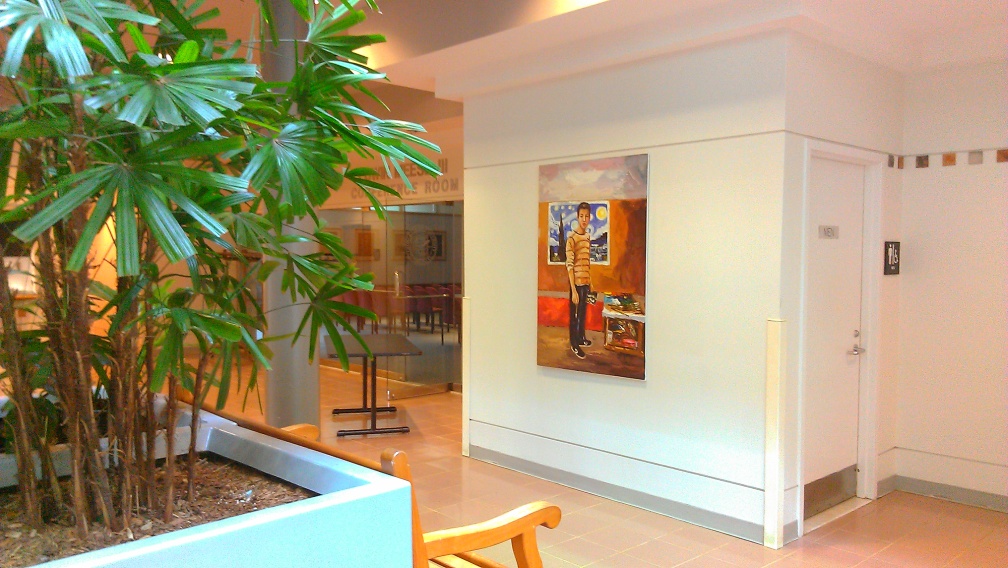There is a really interesting show at GMU campus in Fairfax, Virginia right now called “Making Mona Lisa” featuring photographs by Priscilla Briggs and paintings by Chinese painters who are hired to paint over photographs by Briggs. Usually the photographs they paint over are “masterpieces” such as the Mona Lisa, or Starry Night, but Briggs has brought them her own photographs and the painters themselves are the subjects of the photographs. The painters are in essence completing self portraits but it is Briggs who is the artist – the one with the idea to complete this project in the first place.



The photographs and the paintings compliment each other well. The process the painters go through is revealed in the photographs which feature palette stands with heaping piles of paints or cigarette butts, examples of completed paintings, and indications of a lived-in apartment that doubles as a studio. The paintings in contrast feature the painters themselves looking out at the viewer.



Briggs wall text found on her website:
Wushipu and Haicang are two of numerous communities in Xiamen where entire apartment complexes are inhabited by production painters. The production painters fill orders for oil paintings that end up in furniture showrooms, hotels, and tourist art galleries around the world. Although anyone can go online to email a photo to be made into an oil painting and shipped to their front door, many of the orders ask the artist to make multiple copies of the same image. The painters charge by the square foot and by skill level. Common subjects are reproductions of famous paintings. The artists usually focus on one style of painting, specializing in landscapes, van Gogh sunflowers, Degas ballerinas, Thomas Kincaid cottages, etc.
I visited the painters to make portraits of them in their live/work spaces. Instead of printing the images, I commissioned paintings of the photographs (for close to the same cost as having an inkjet print made here in the US). I also made photographic prints of still life images of the painters’ live/work spaces. This work explores notions of the “original” work of art and its value, authorship, and the interplay between photography and painting.
These paintings reminded me of Vik Muniz and when in Reflex: A Vik Muniz Primer he talks about working in New York at a frame shop that sold paintings.
I found a job in a frame shop on 57th street. The owners of the shop claimed to be direct descendants of Egon Schiele’s Austrian dealers, but the place was really an assembly line for cheaply produced decorative art to be sold at furniture stores. They would acquire bulk ‘Impressionist style’ canvases painted by Chinese craftsmen, embellish them with a baroque faux-wood frame, and validate the contraption with an invented biography of the ‘European master’ who was supposed to have painted it, printed on an official-looking label. I got to paint some of these master paintings for extra income; they brought two hundred dollars a pop. I painted English ships battling Spanish galleons. I liked to paint the smoke of the cannons and the exaggerated waves. I even had my own ‘master’ biography: I had been born in Belgium and educated in a prestigious school in England, and I had a very cool name – I think it was Blanchard. p. 14






















